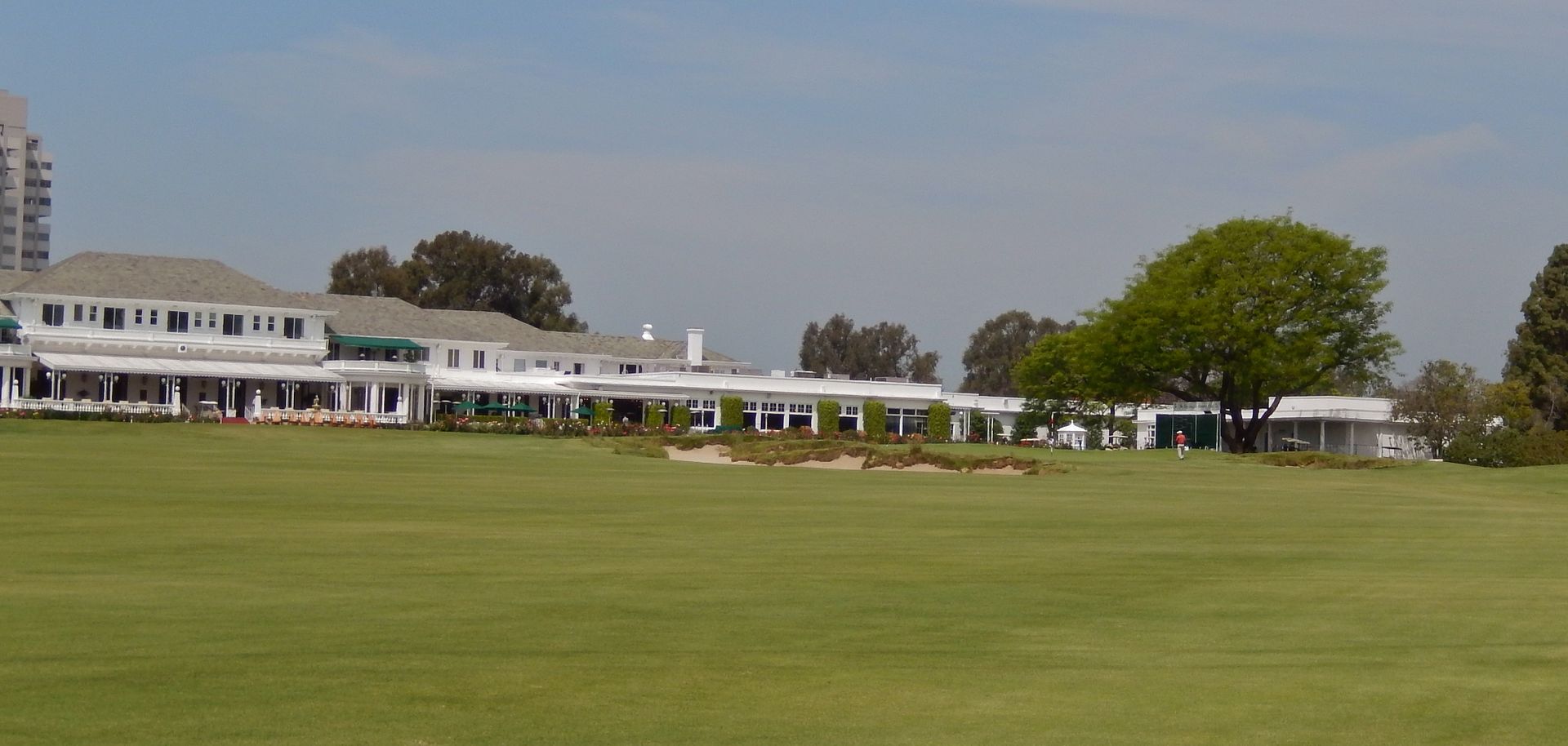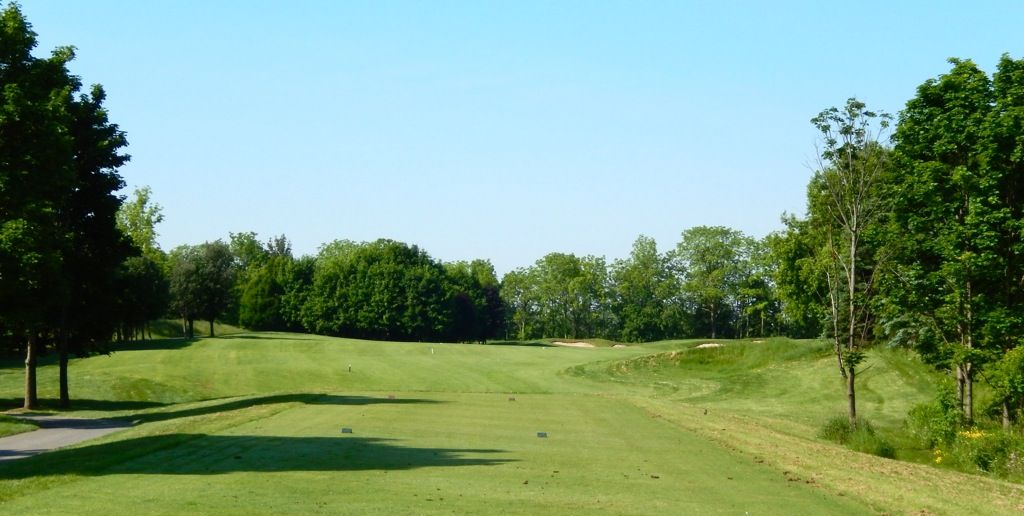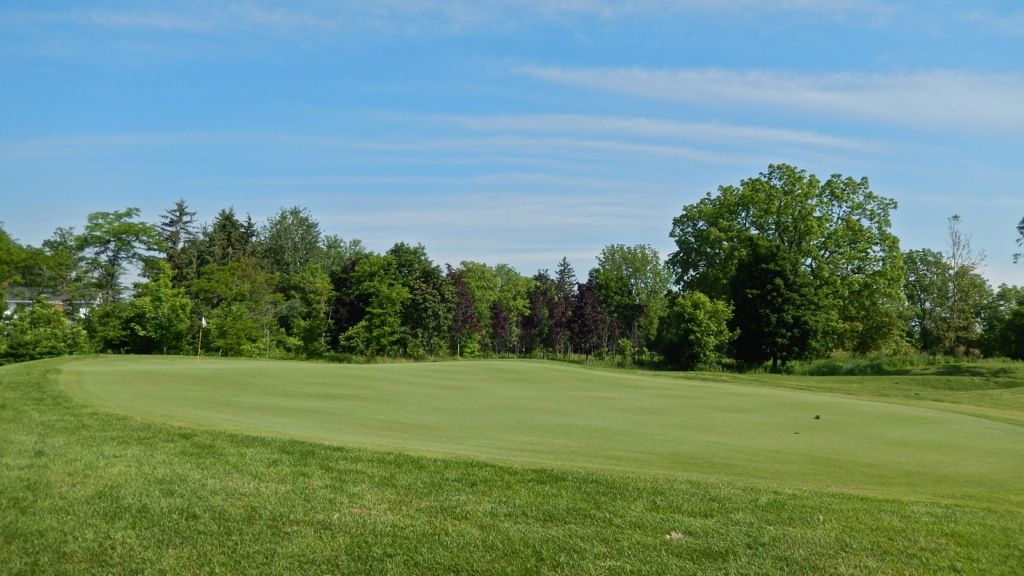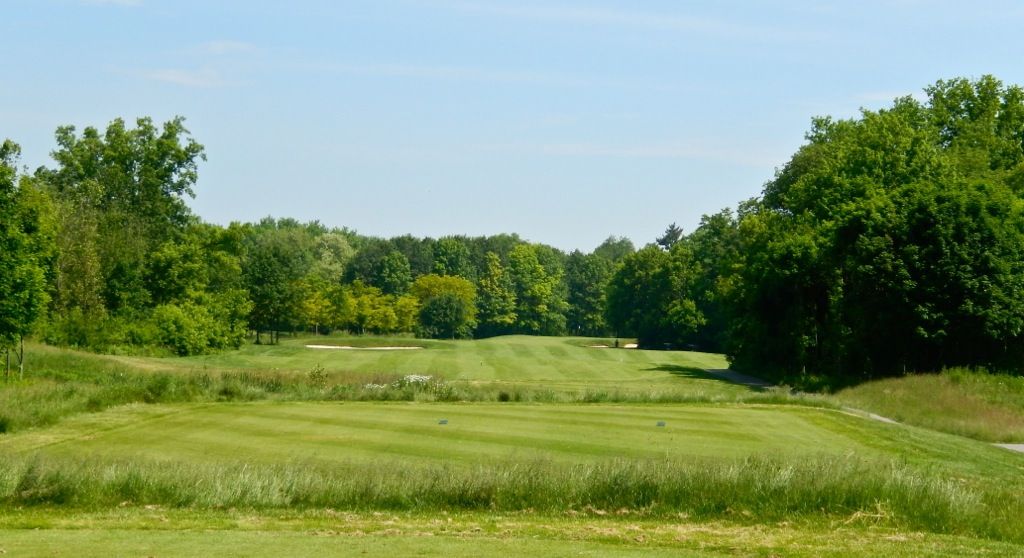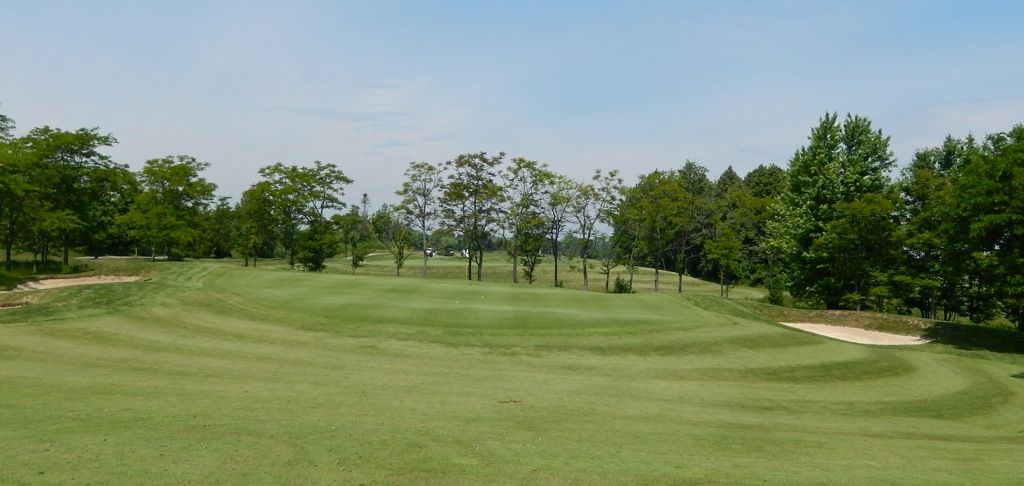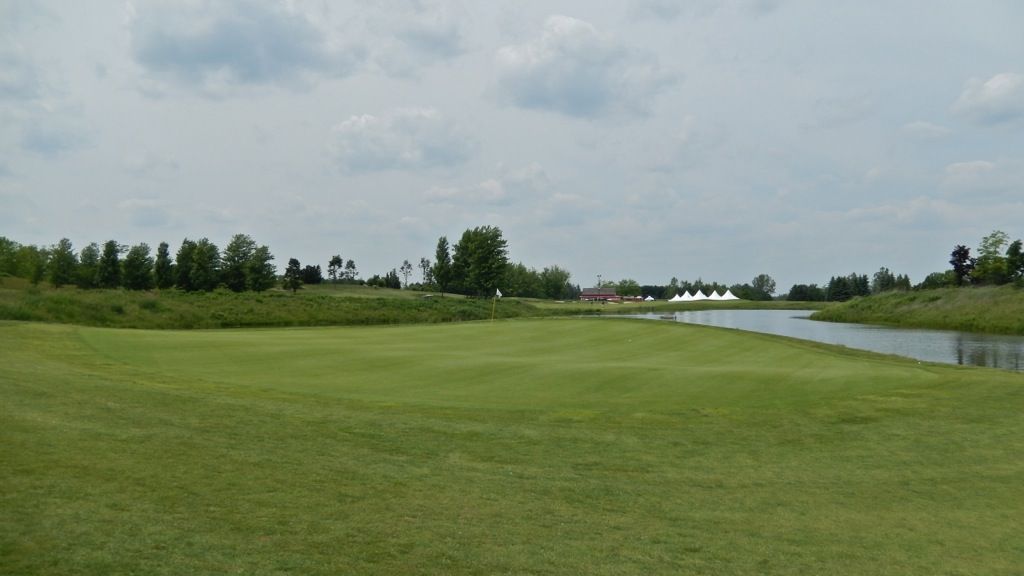Los Angeles, California, United States
Architect: George Thomas, Restoration by Gil Hanse and Geoff Shackelford
7,236 Yards, Par-71
Rating/Slope: 75.7/143
My Quick Review: Every course thinking of restoring needs to see the work at Los Angeles.
LACC starts gently. The first tee, along with the 9th and 18th greens, all occupy the flat land immediately behind the clubhouse. The first hole is a straightaway par-5 with four bunkers staggered -- right then left then right then left -- along the side of the hole. A straight ball is always fine, but for the preferred angle of approach into the green, the golfer must challenge the final fairway bunker:
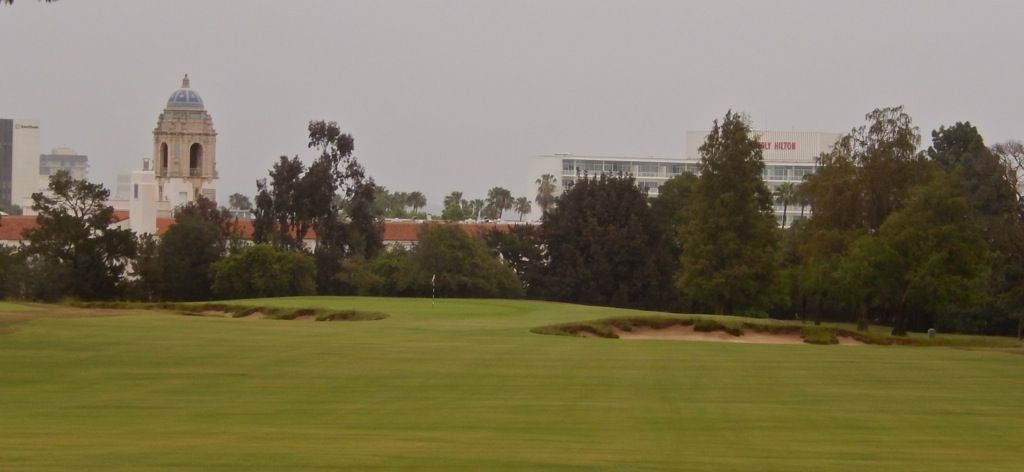
The second is a long and very difficult par-4 where the tilted fairway will help to funnel balls to the preferred angle of approach on the left:
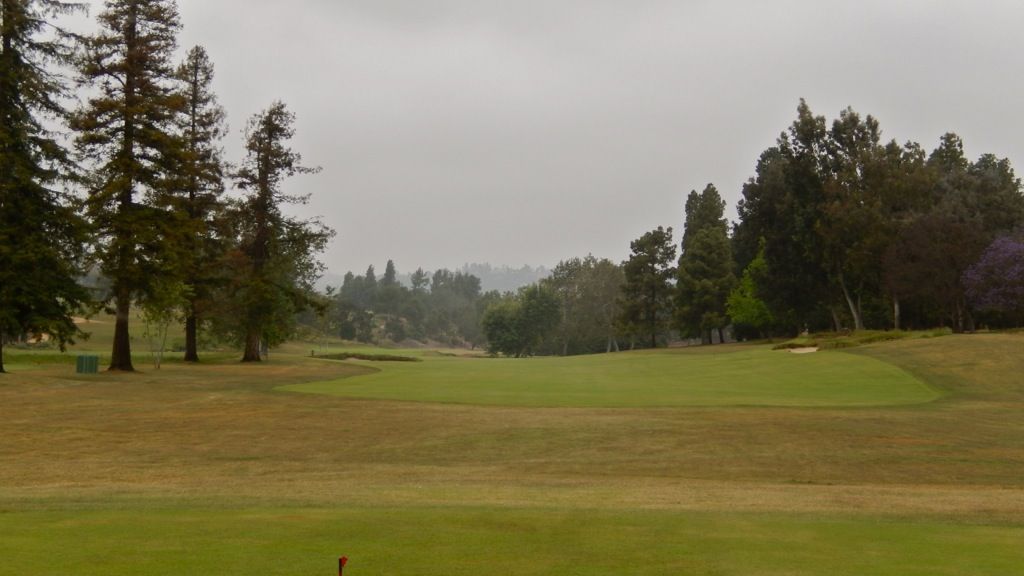
Hopefully by the time you hit your approach to the 2nd you have found your swing, as an all-carry approach with a long iron is required to find the green:
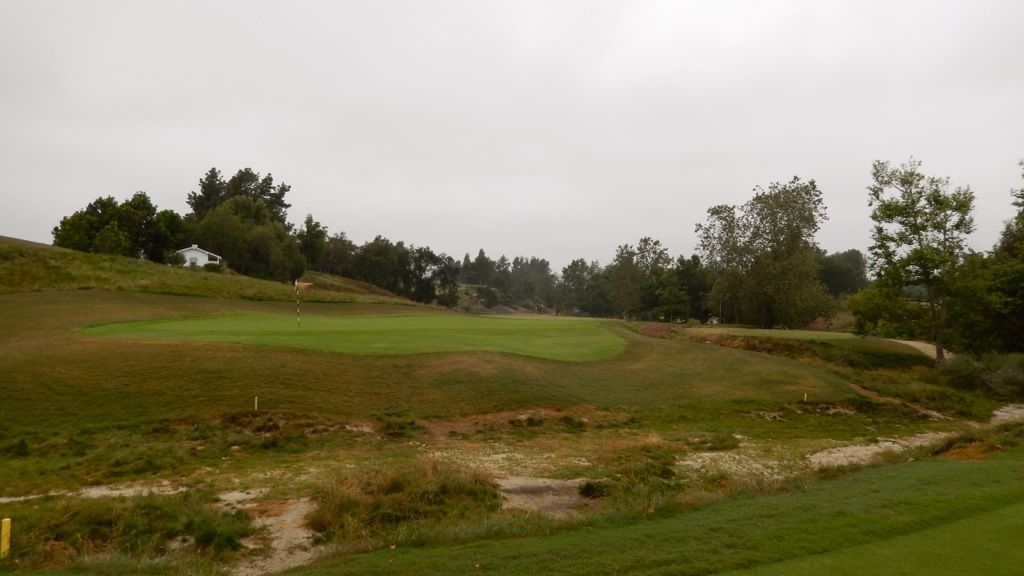
One of several blind tee shots at LACC is found at the world class par-4 3rd. The rolling land to the right is the safe route, requiring the shorter carry from the tee to crest the hill, but it leaves a potentially awkward stance and the longer length approach:
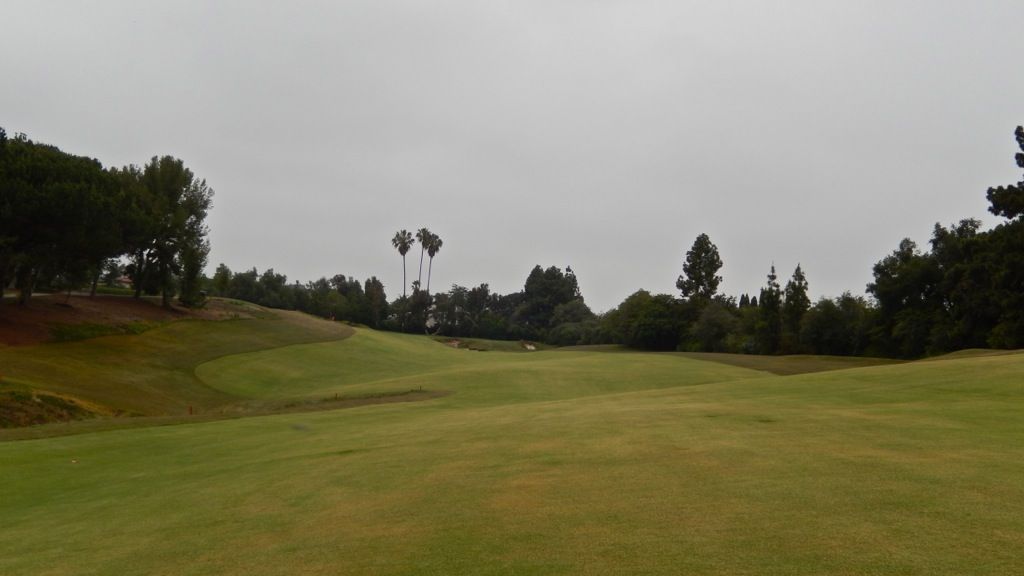
A tooth! Or a boomerang. Call it what you want, but the shape of this green is certainly a Thomas template...

The 4th is a downhill par-3 of some 200 yards. While the initial fear is a miss short/right, the slope of the green means a miss long or left is worst:

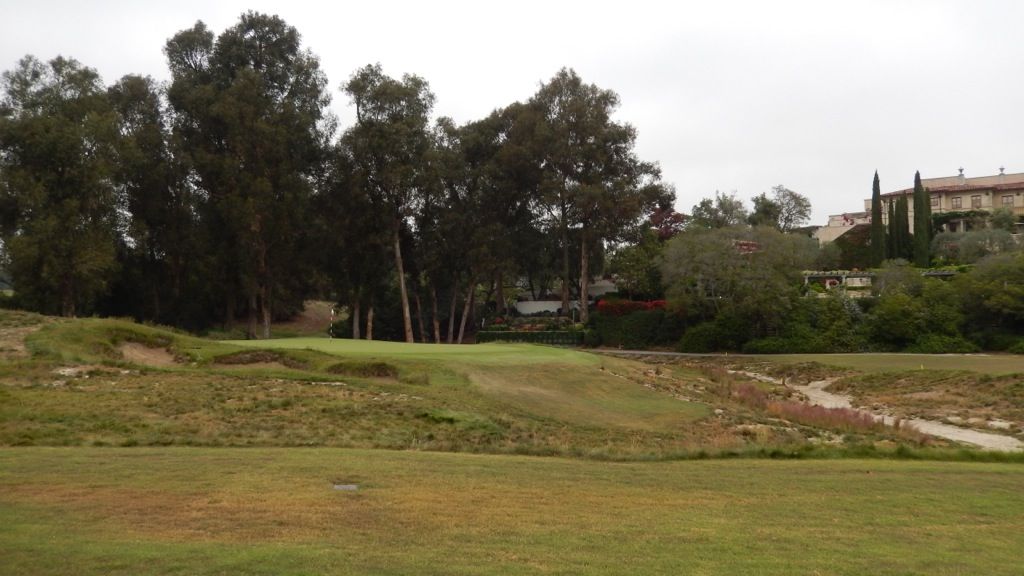
Up and over (for some) at the 480 yard par-4 5th. It takes a drive of 280 yards from the championship markers to crest the hill, but the slope of the land short of and around the green allow a thinking golfer to find the putting surface with a running approach that need not challenge the front bunkers:

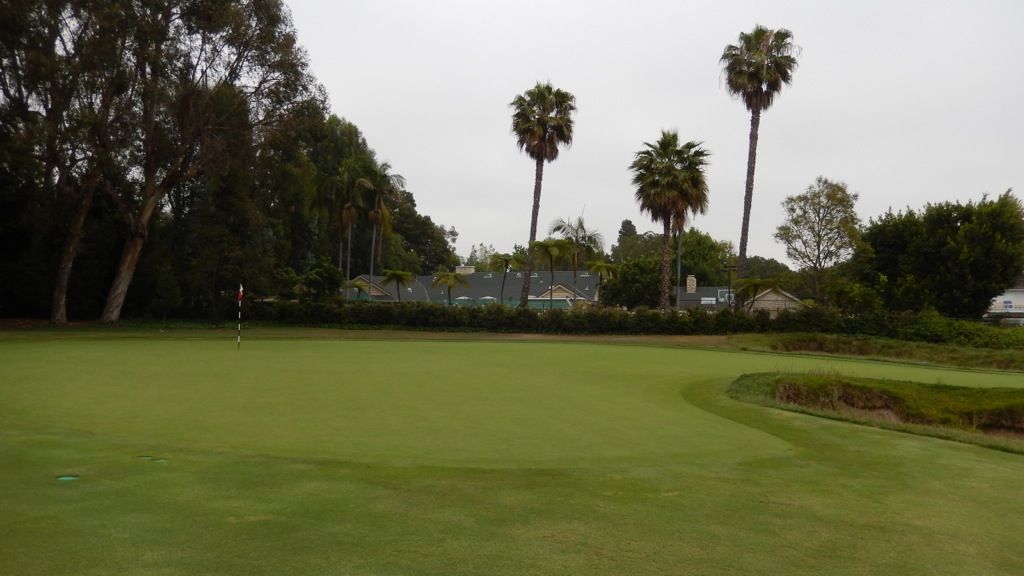
Easily the most controversial and discussed hole at LACC is the potentially driveable 320 yard par-4 6th. The tee shot is blind, and the golfer has the option of playing left into a valley to leave a wedge approach to a shallow green, or to play over the hill on the right (a carry of about 250 yards) to leave a pitch up the length of the green:
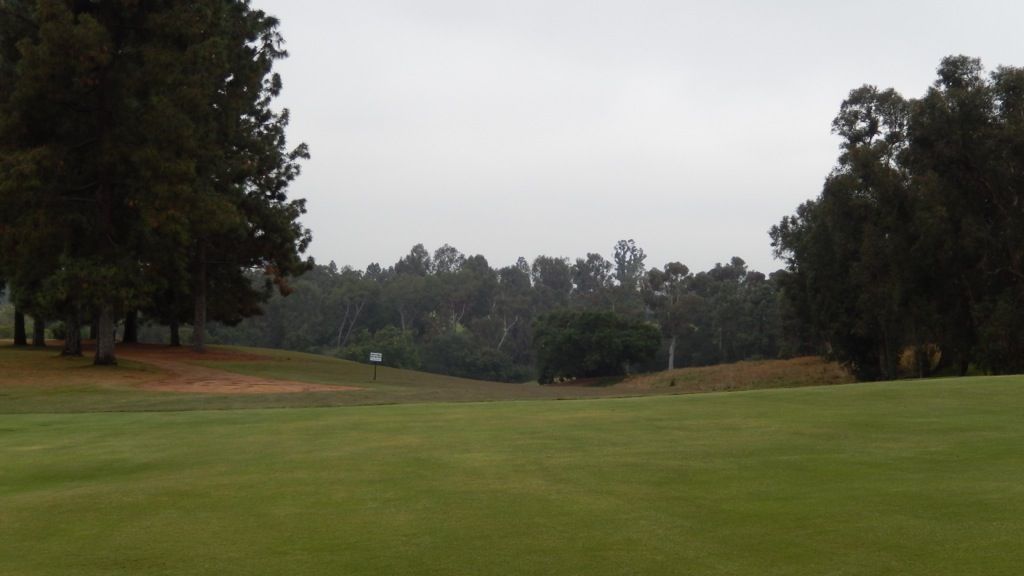
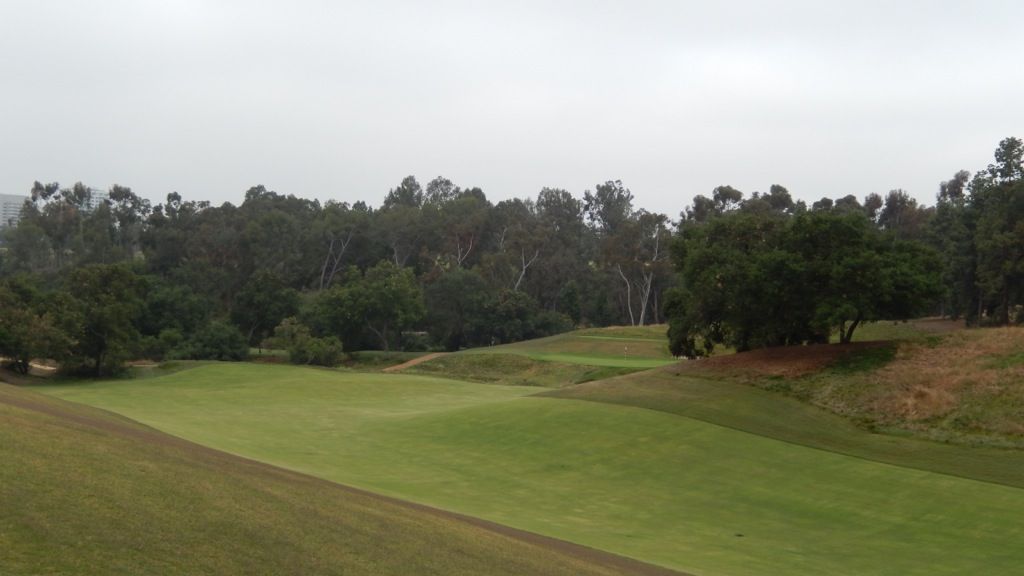
As seen from 70 yards from the green in the valley, the approach from this angle is hardly a birdie opportunity:
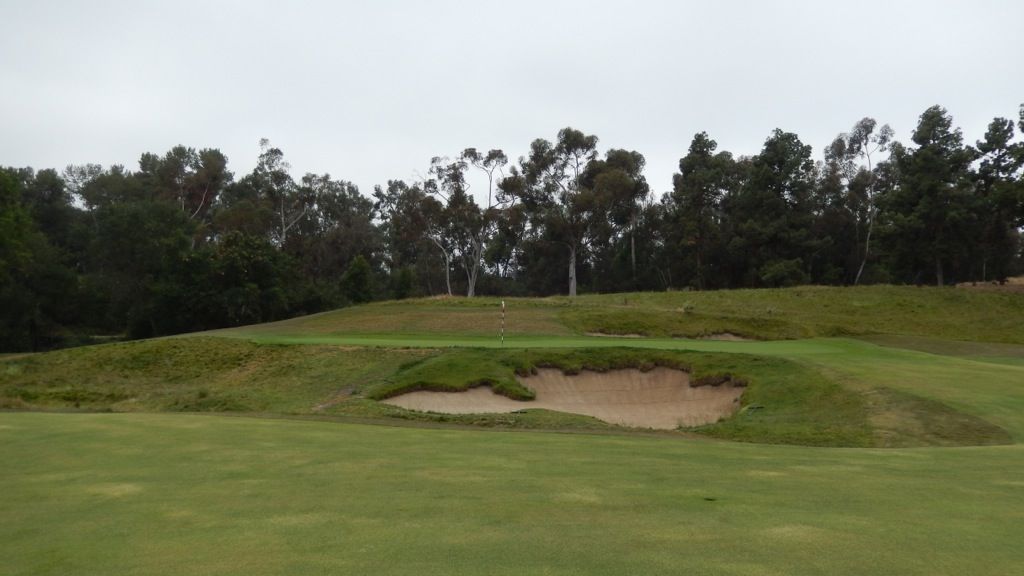
Even from the right, though, the pitch is a difficult one to a back pin as the green tilts hard to the left:

From behind we get a better idea of the narrowness of the green:

The 7th is another difficult one-shotter -- a long iron or wood is likely required as the hole stretches to 240 yards. The land to the left can be used to funnel the ball onto the green, but the green subtly counterslopes, so shots played on the left will not reach right pins.
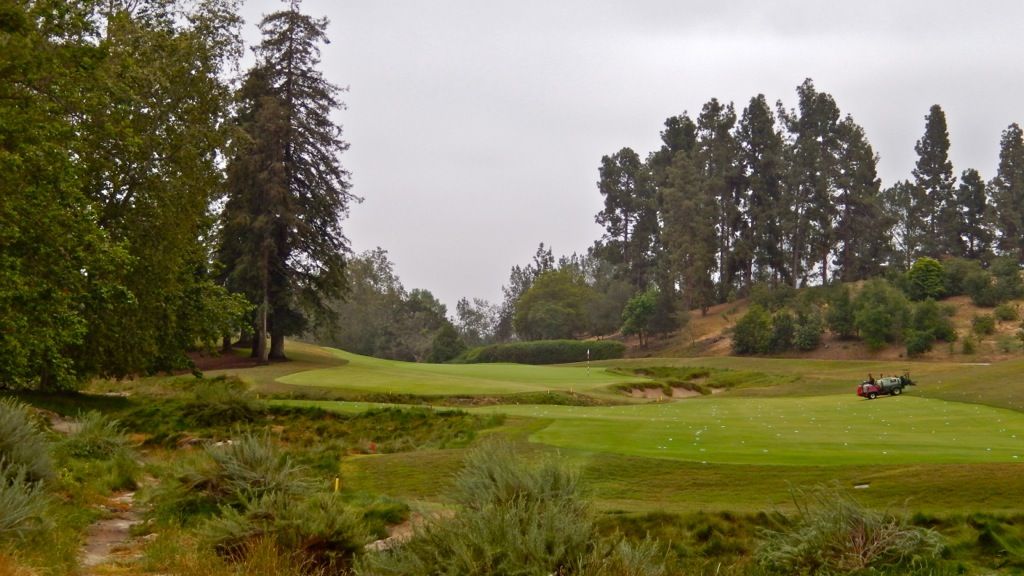
Draw, Fade, straight. Can you hit all the shots at the double-dogleg 8th? A demanding and genius hole that maximally uses the wash that runs the length of the hole.
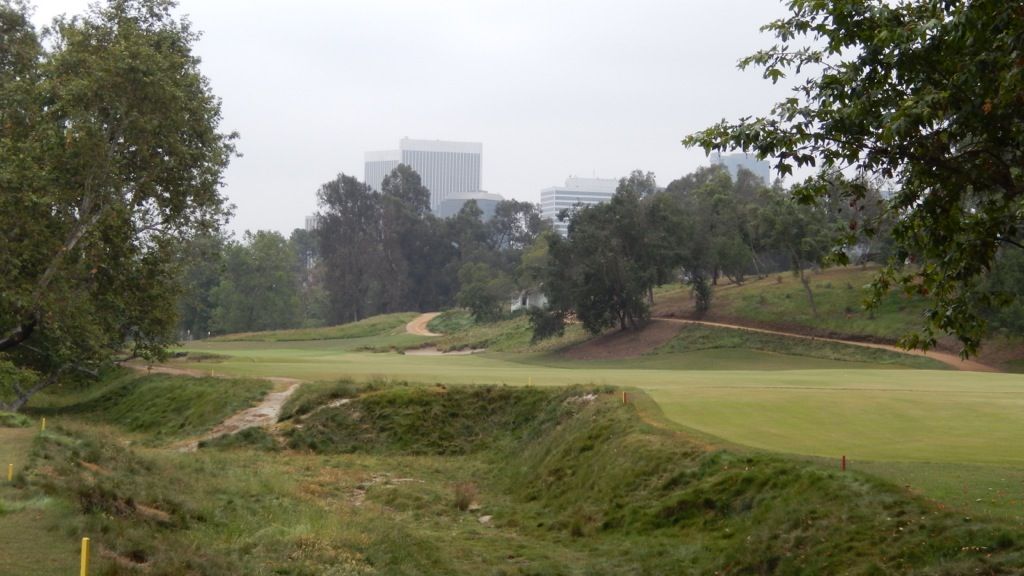
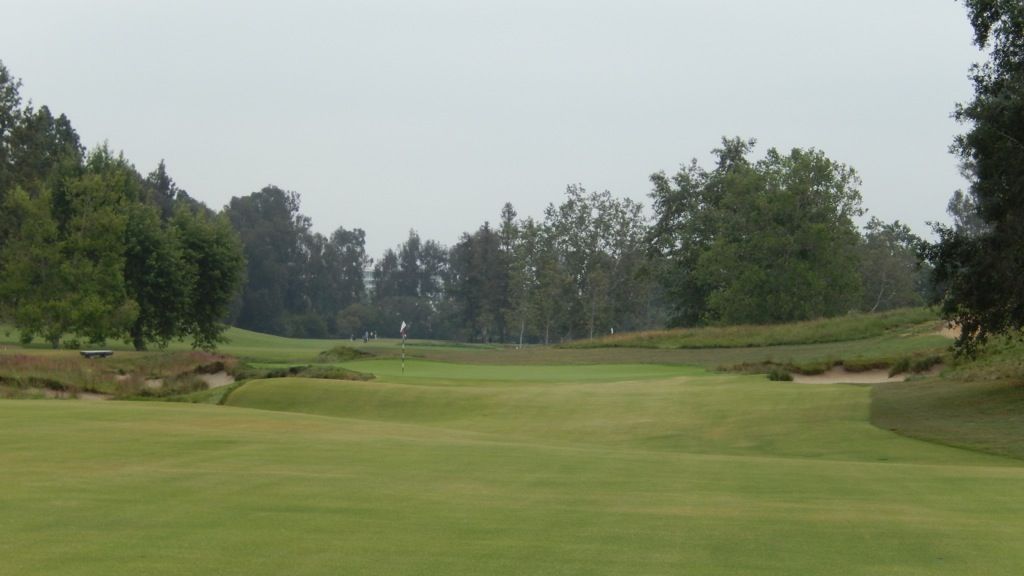
The 9th is not as visually striking as most of the front-nine, but the wildest green on the course will keep the golfer honest. The uphill par-3 will play as a mid-iron for most, and the uphill nature of the hole hides the severe back-to-front tilt of the green. If you hit it above the hole, your caddy will hand you your putter and may just bring along your wedge too!
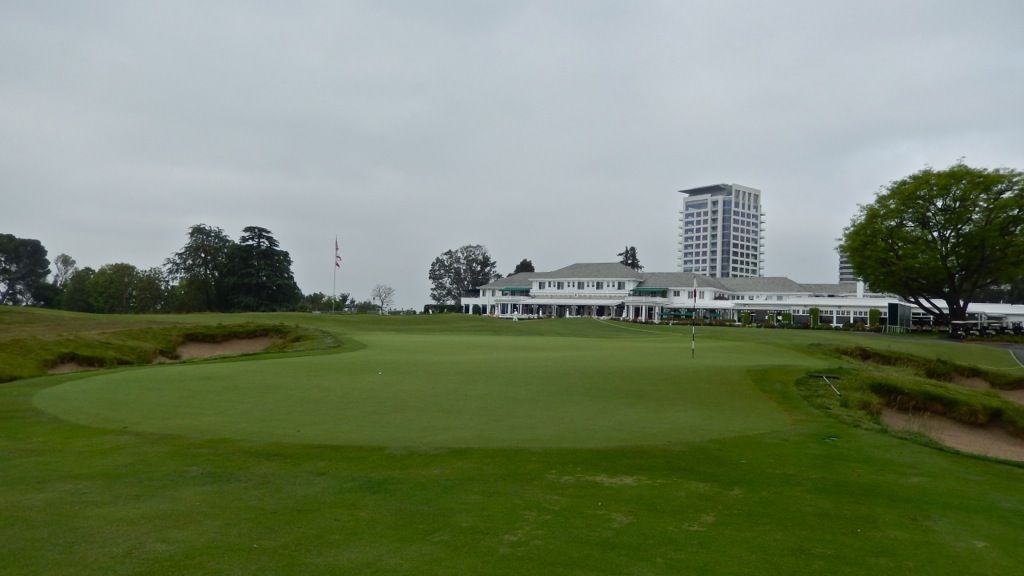
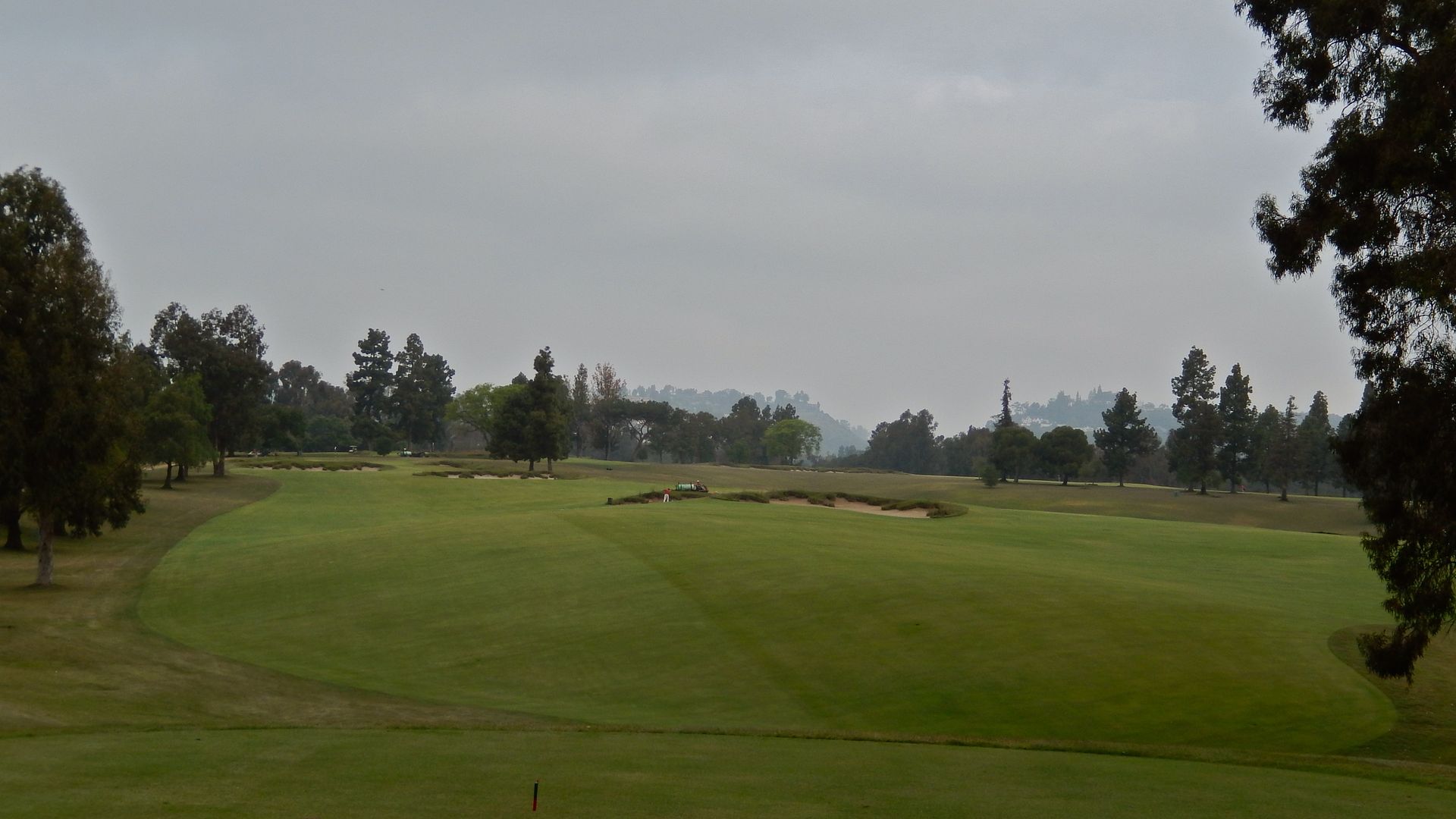
Though there are no mountains or ocean, the 11th is as stunning a golf hole as any in golf. The 250 yard reverse-redan is pushed-up and literally built out of nowhere. Bunkers short and left protect against the success of a top-shot and protect the ideal play -- a bounced-in approach from the left.
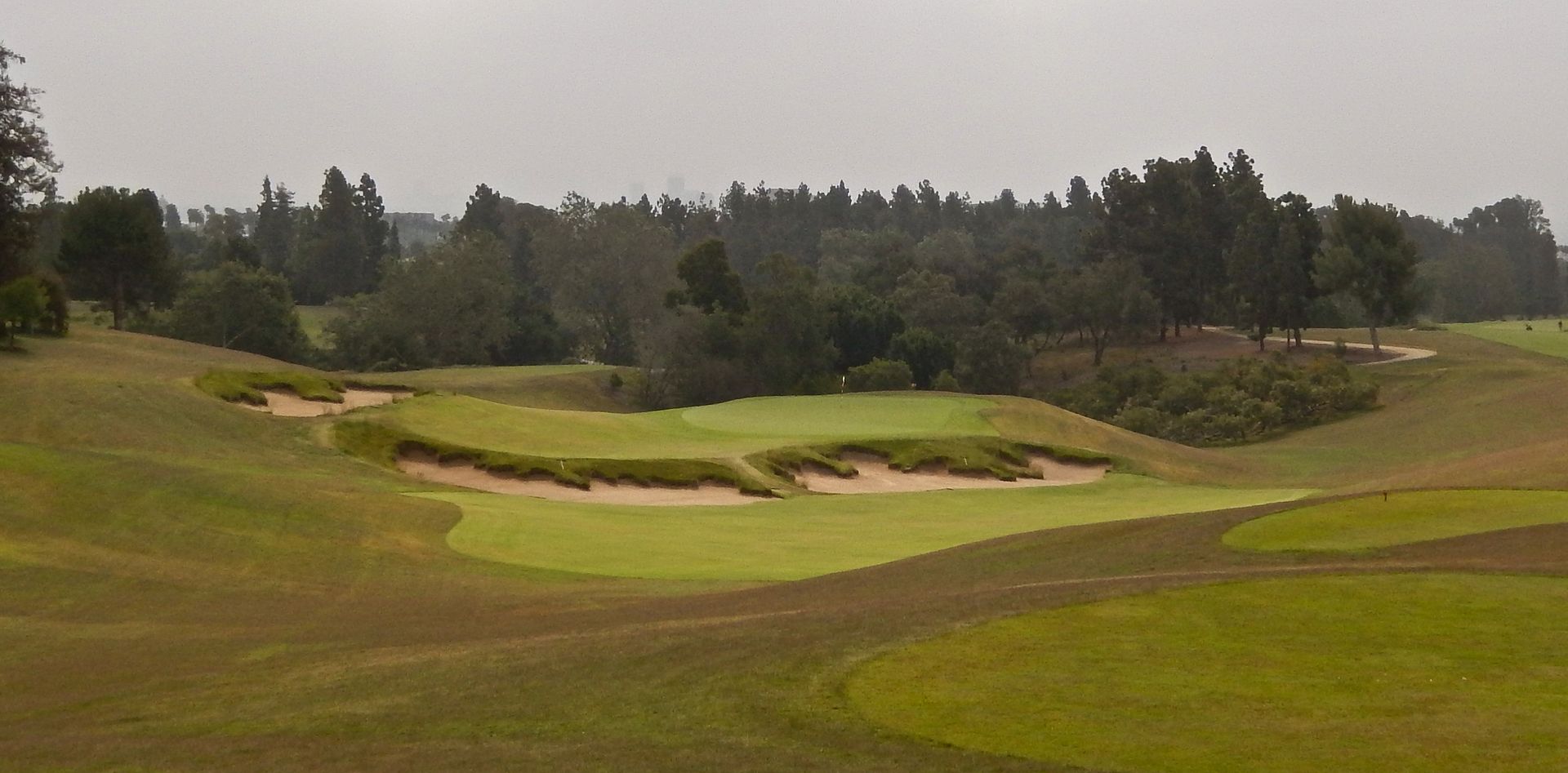
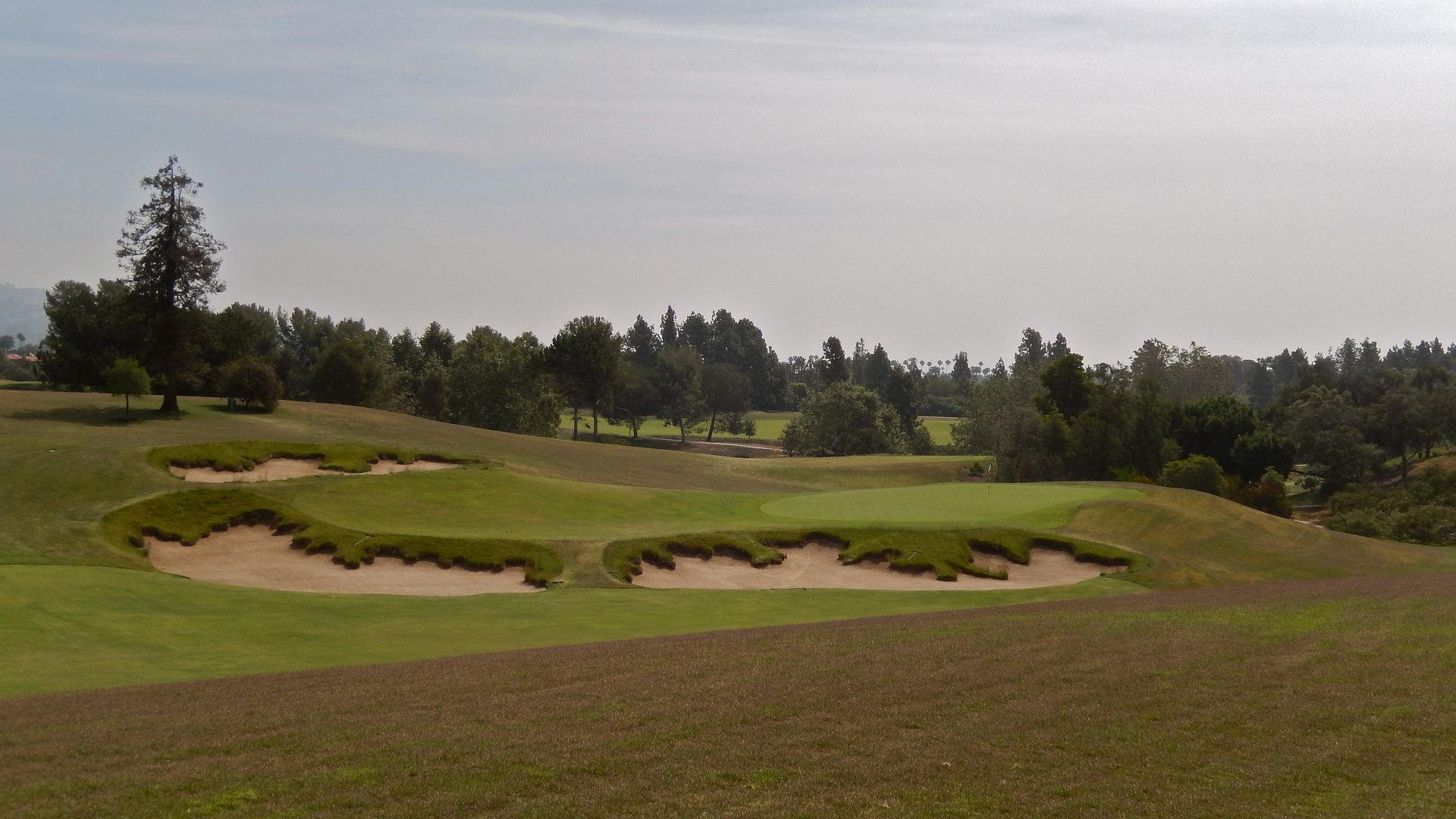
I don't know the hole well-enough to say which is worse, but a miss short-left or a miss long-right both seem like disaster...
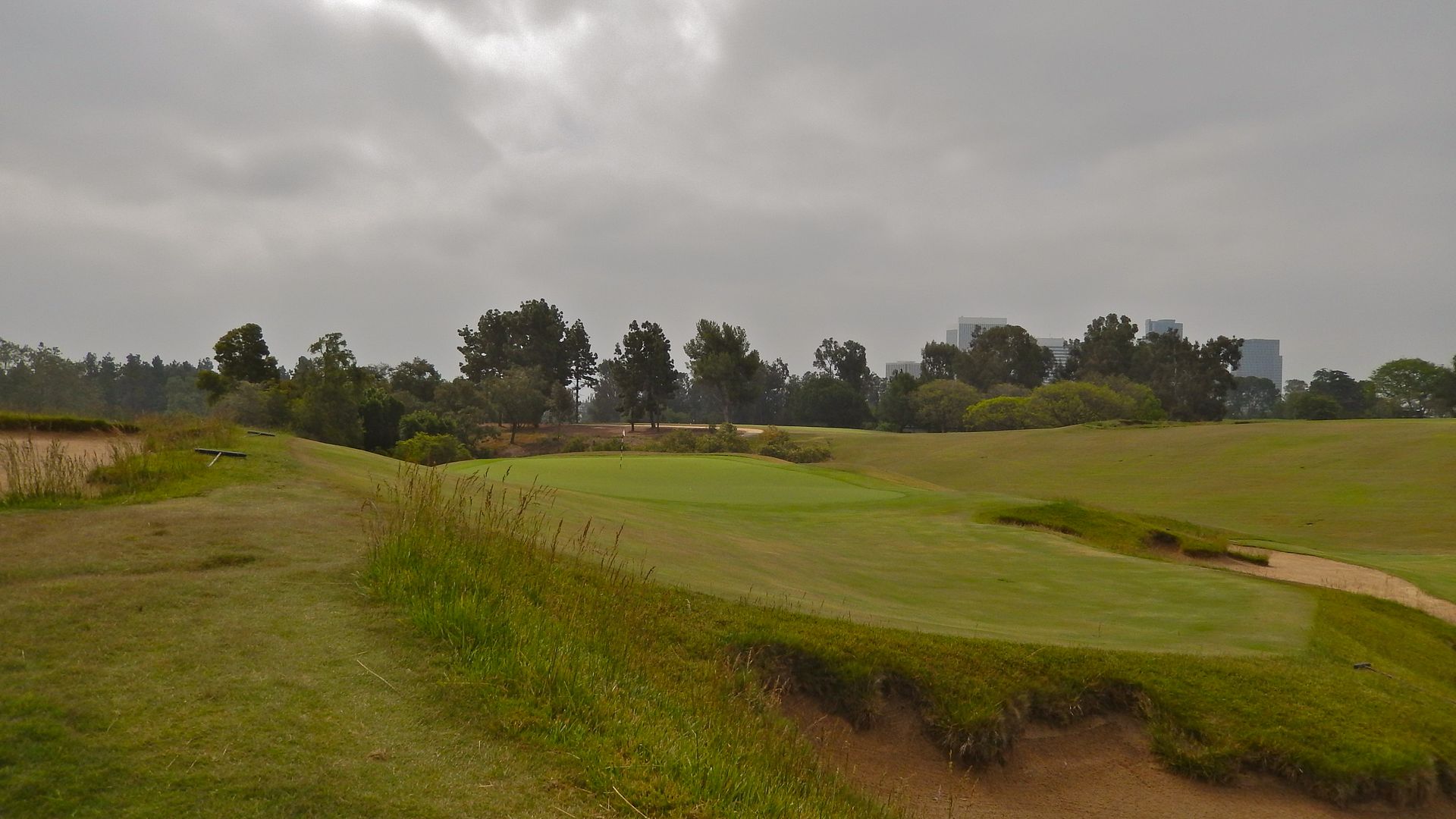
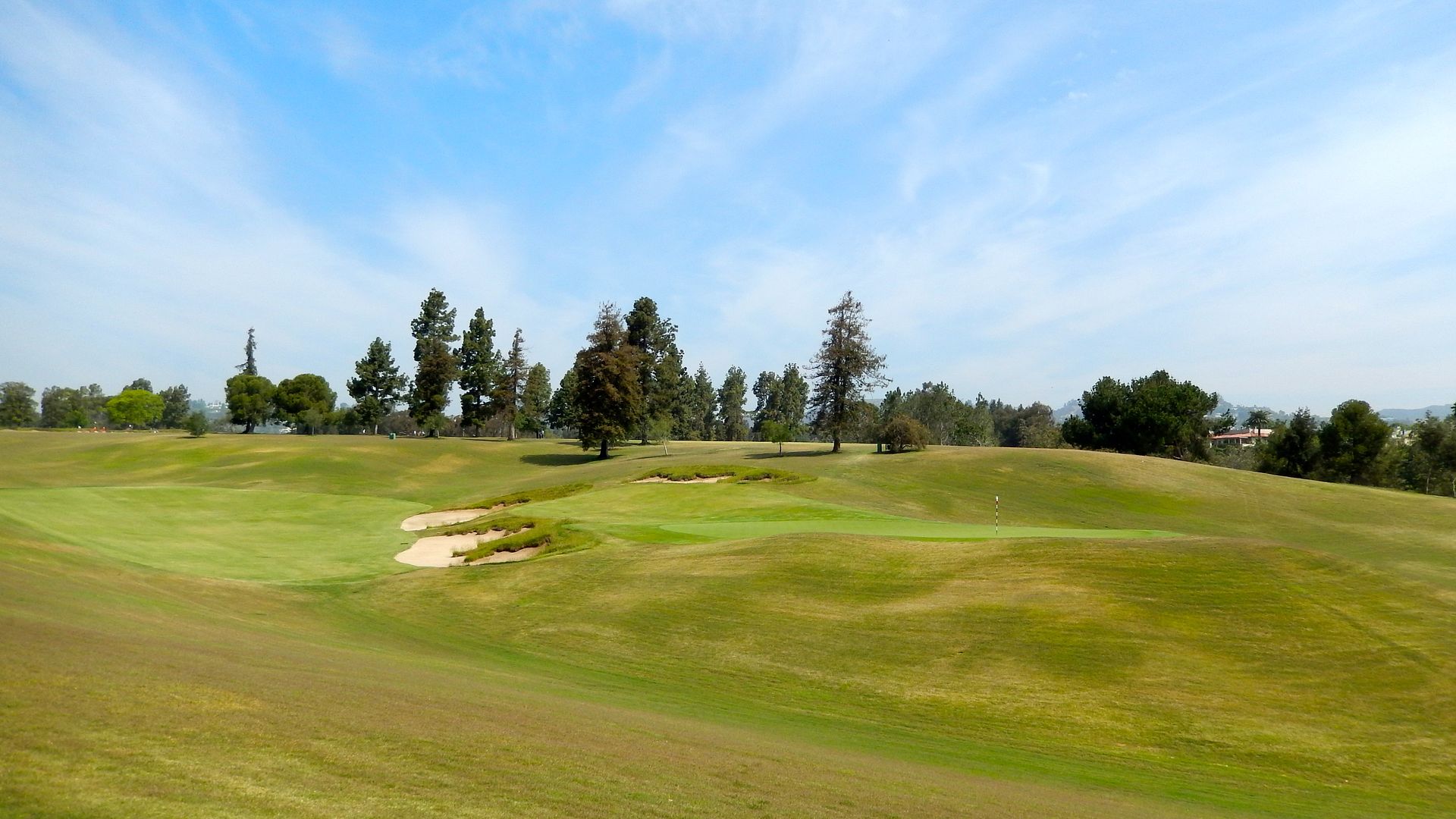
A truly blind tee shot at the 12th, a short-ish par-4, gives way to a seemingly benign approach...
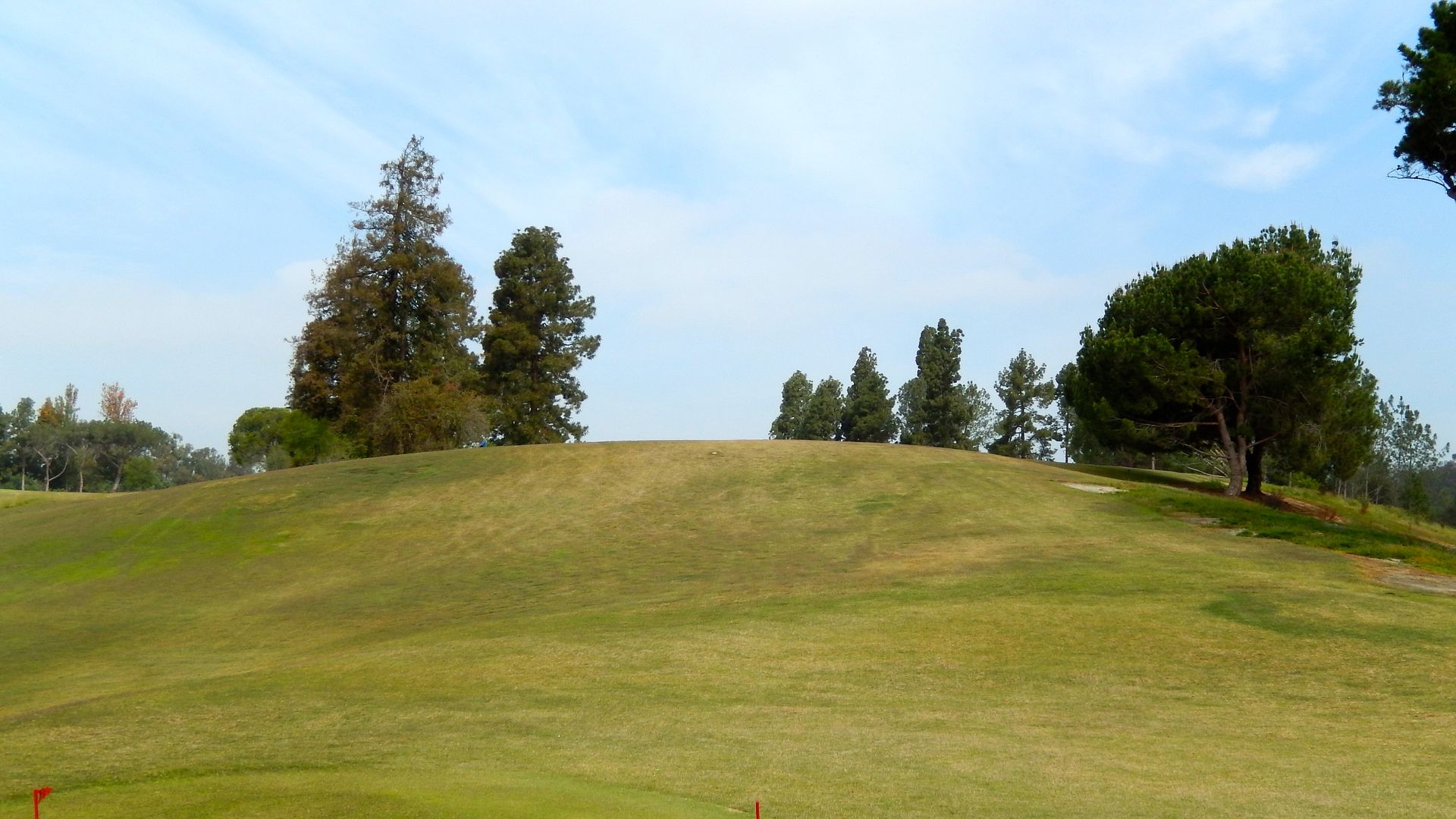
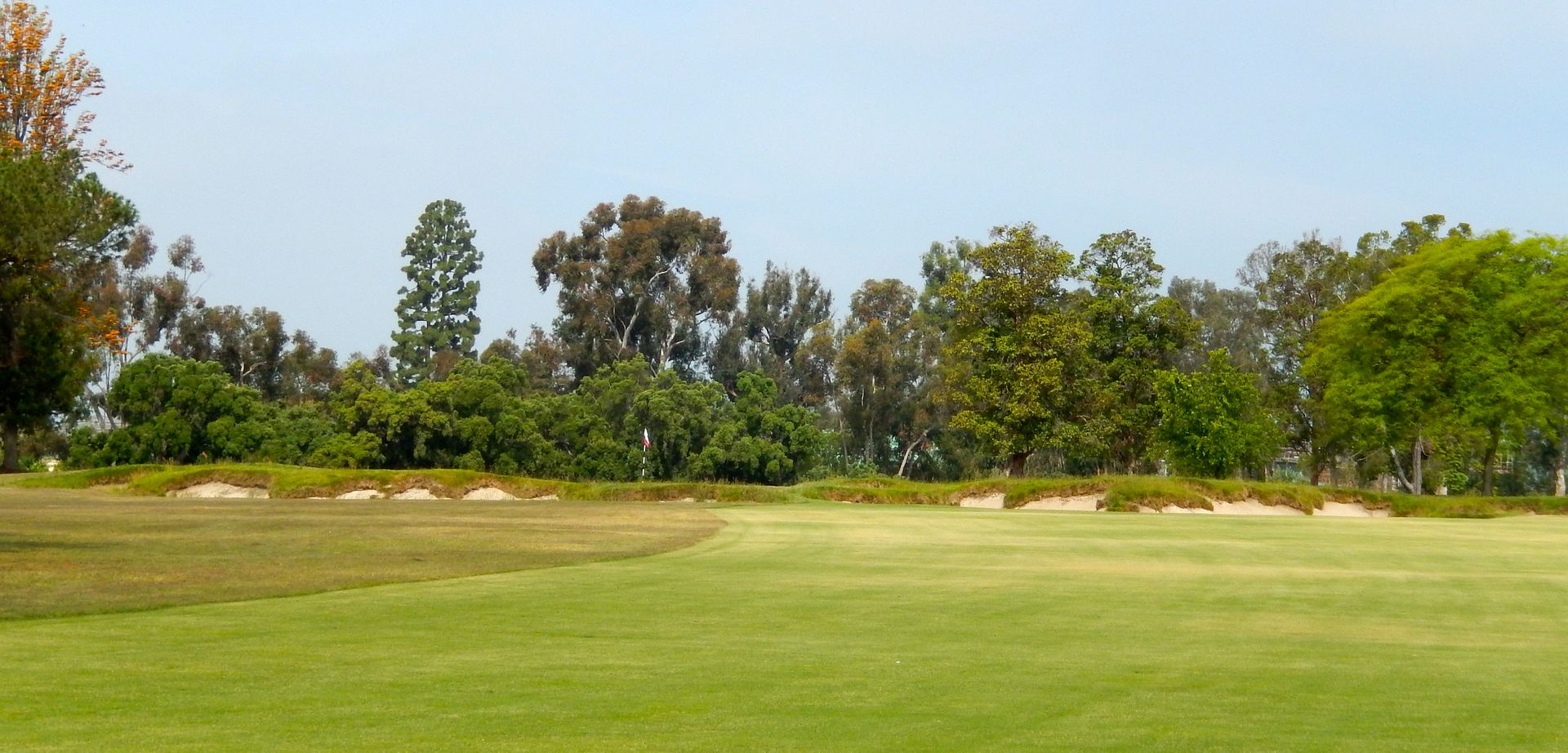
But the green is clever and deceptive.. only a small front portion of the green is in view. But the green is wide and expansive beyond and an approach long enough to find only the small front portion of the green, will surely find bunker on any other line.
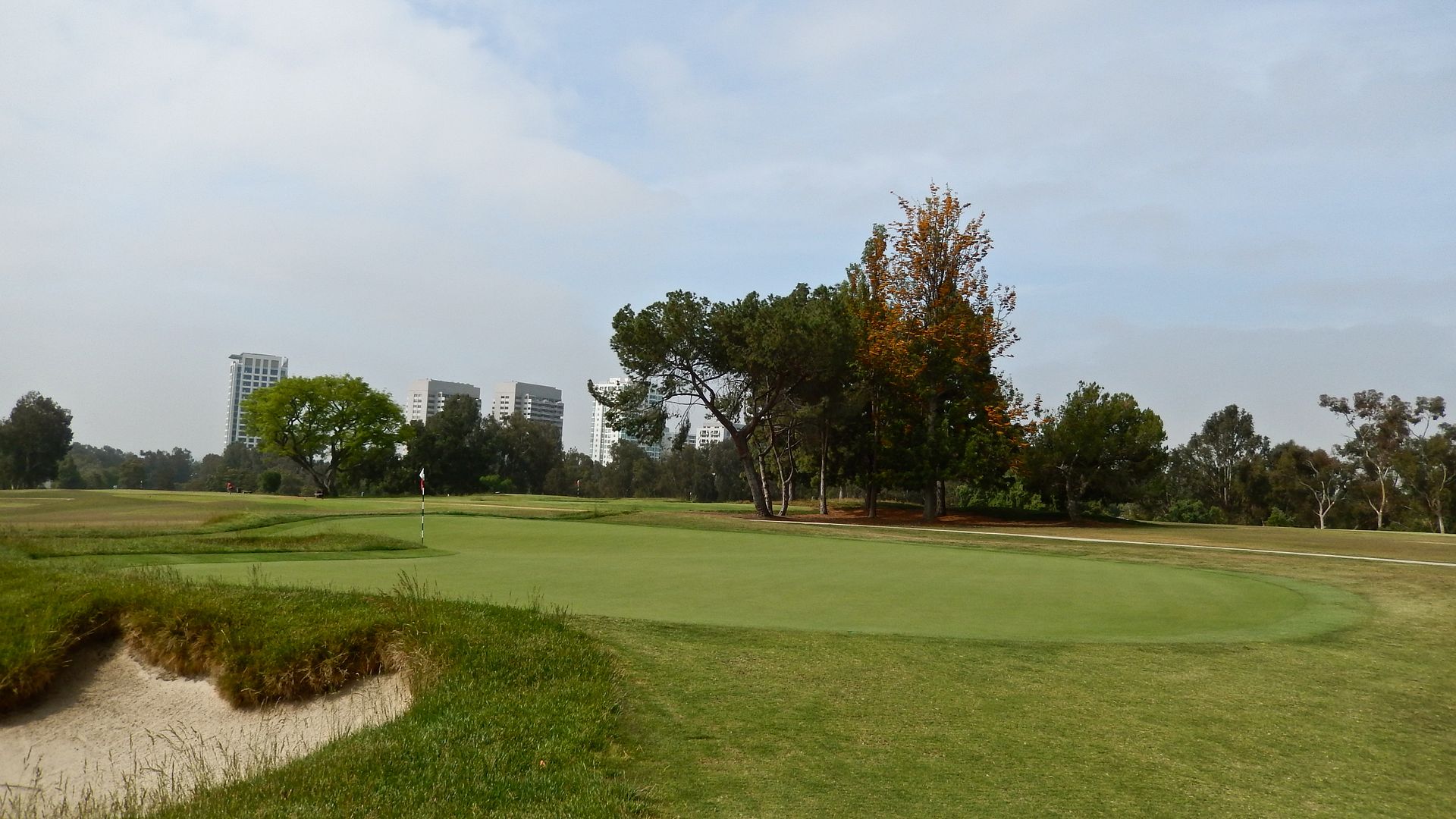
There is wonderful pacing at LACC, and the monstrous 450 yard 13th felt just right, having not played a long two-shotter since the 5th. There is ample width to play to, but once again the lay of the land dictates strategy; a dip in the right half of the fairway must be avoided if the golfer wants a view of the green. And, keeping in mind that this will be a long-iron / wood approach for many, the approach from the right, which requires a carry over greenside bunkering, is beyond most golfer's abilities.
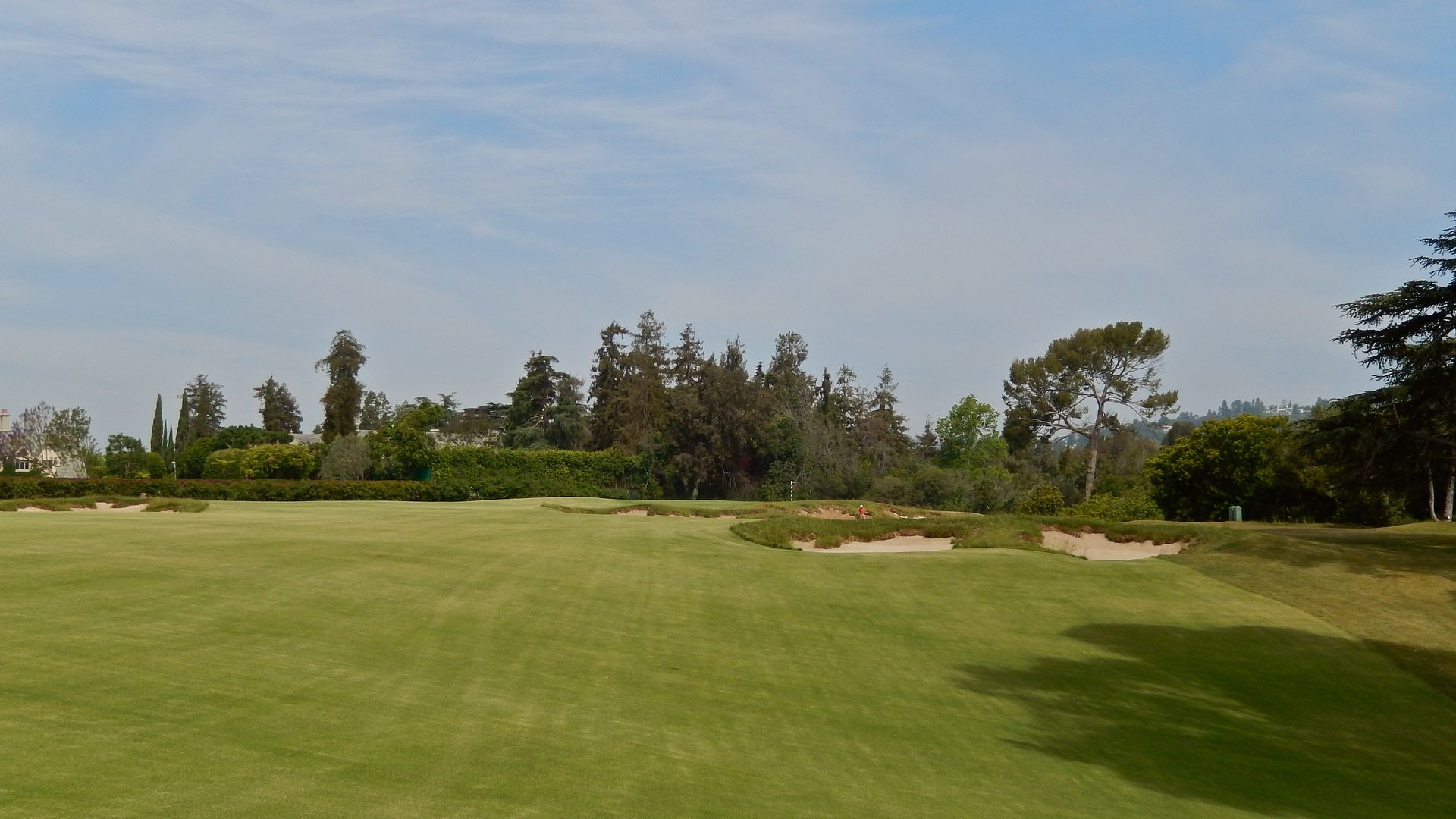
And, in case the golfer is overly frustrated with his golf game, glory awaits behind LACC's 14th tee...
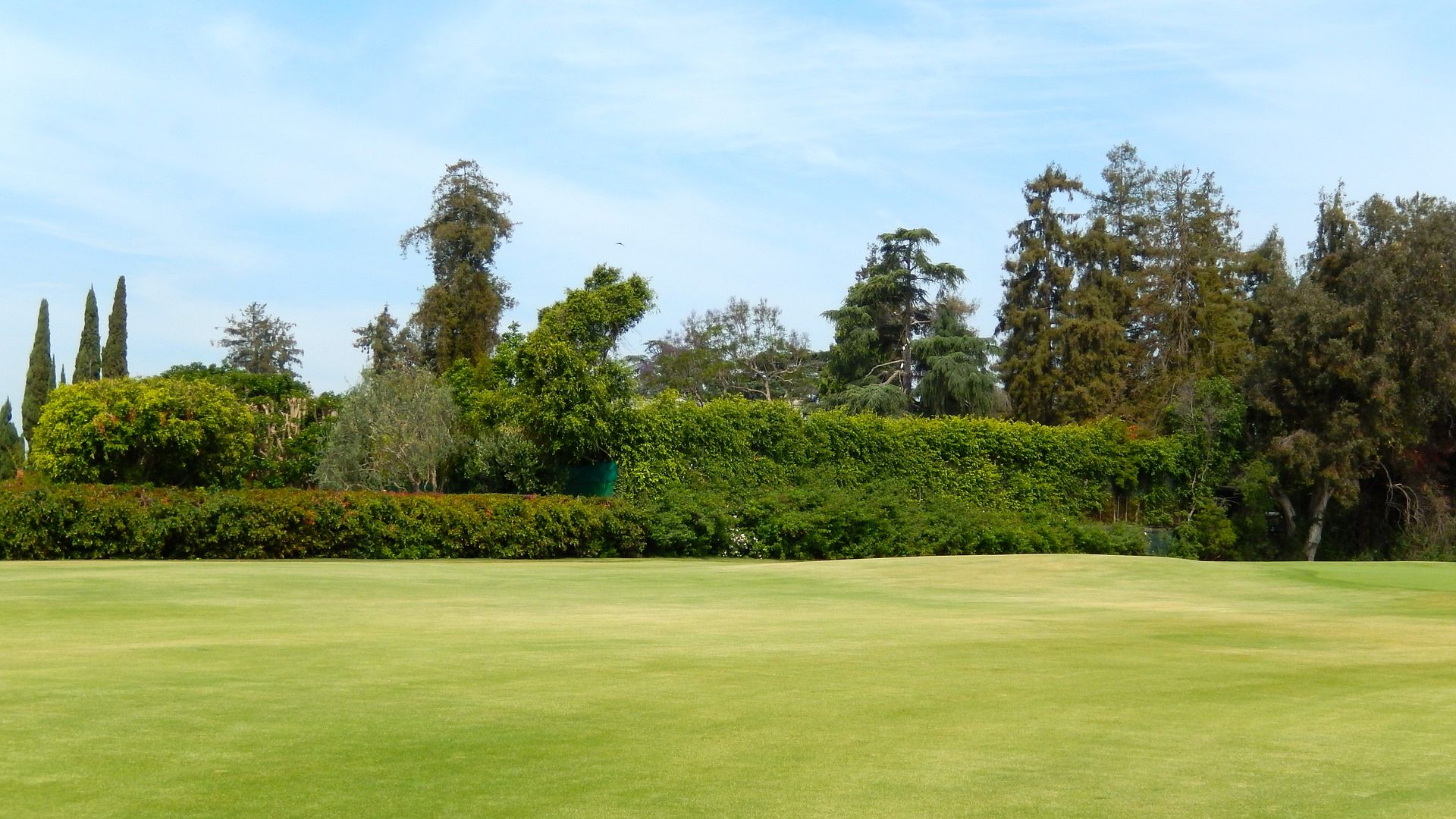
The 14th stretches to almost 600 yards from the championship and is an exceptional par-5 -- birdie can be made but disaster lurks on every shot. A trio of diagonal bunkers cut into the landing area of the tee shot, protecting the shortest line and a turbo-boost, but ample room is given to the left for the golfer willing to tack his way to the hole. Once again, a dip in the fairway is well used. Here at the 14th, a sharp fall-off on the right side of the fairway 100 yards short of the green, will funnel seemingly well-played lay-ups into rough, bunker, or trees.

As is so often the case at LACC, bunkering is used to hide the putting surface from the golfer's view. At the 15th, a 130 yard par-3 three, the golfer is left to wonder where lay the green's borders.
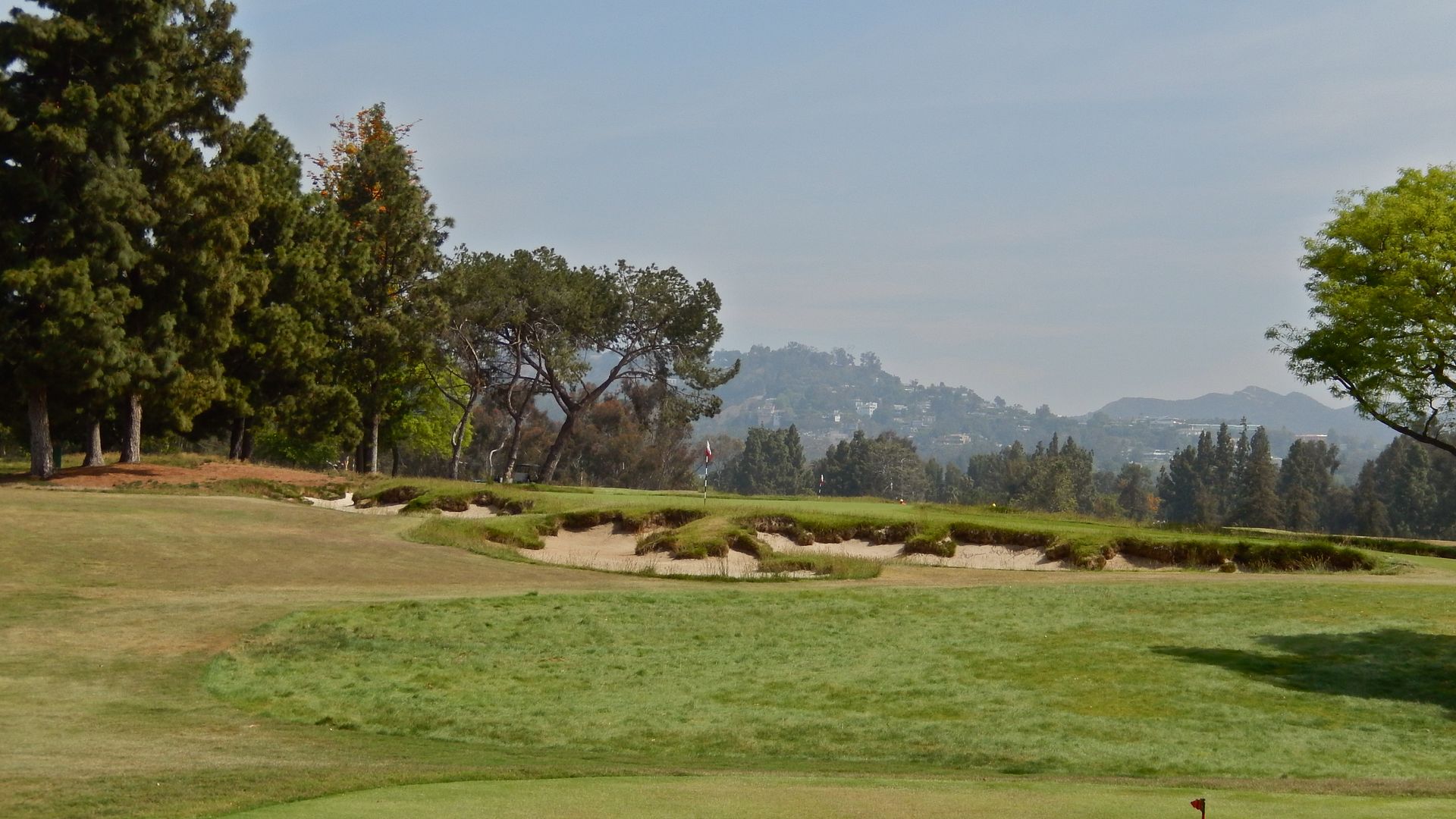
Extremely narrow at the front before widening at the rear, this photo shows the green's borders are narrower than most would guess...
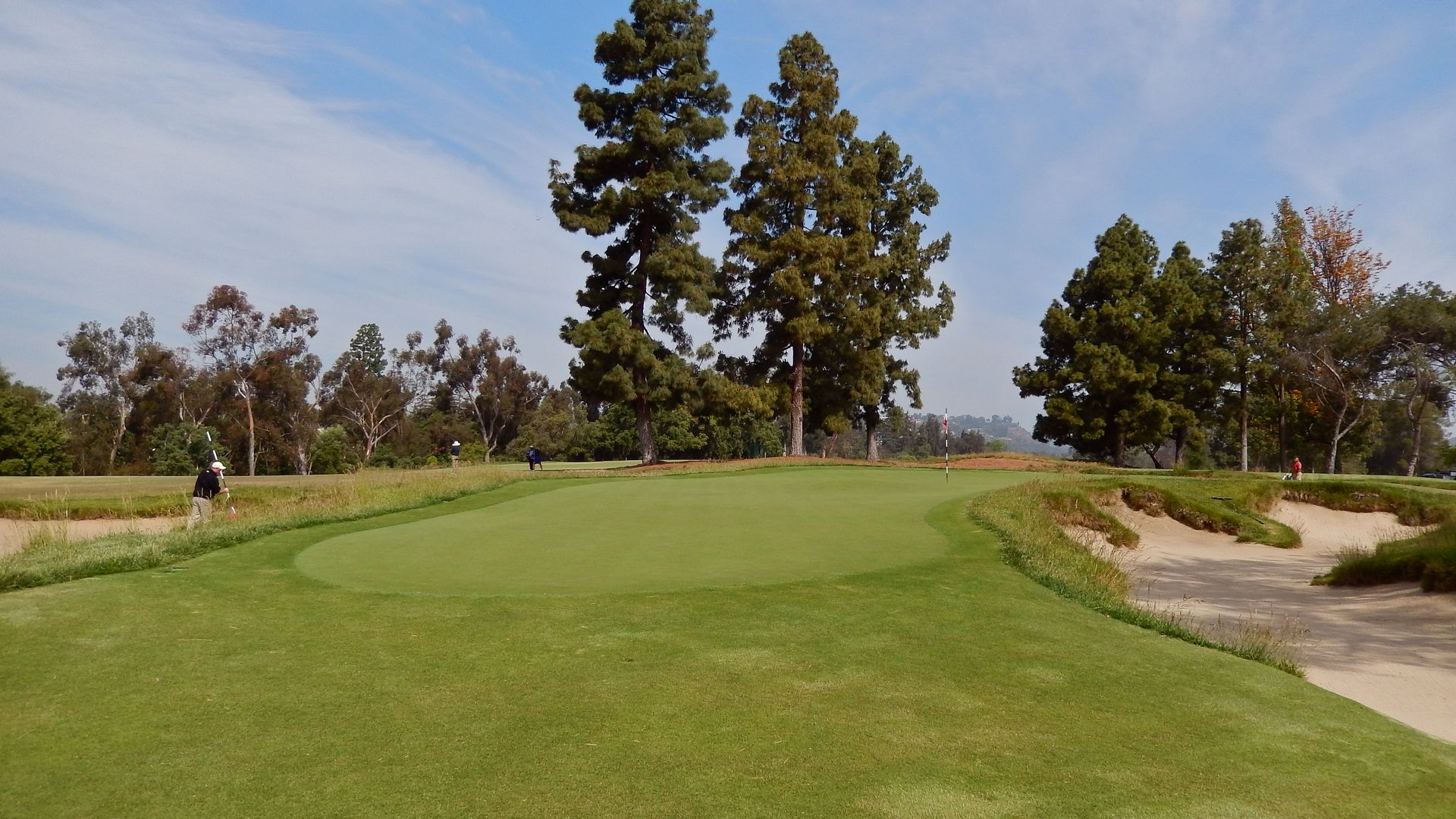
The 16th is one of the holes least altered during the restoration, and it begins a very difficult 4-4-4 march to the clubhouse. Simple bunkering and a rolling fairway show the genius of restraint:

Interestingly, after extreme restraint was shown in laying out the 16th, I found the 17th to be a tad cluttered. While the ideal line into this front-right to back-left angled green is protected well by a dry wash on the right, framing/penal bunkers in play down the left do not add interest to the play of the hole.
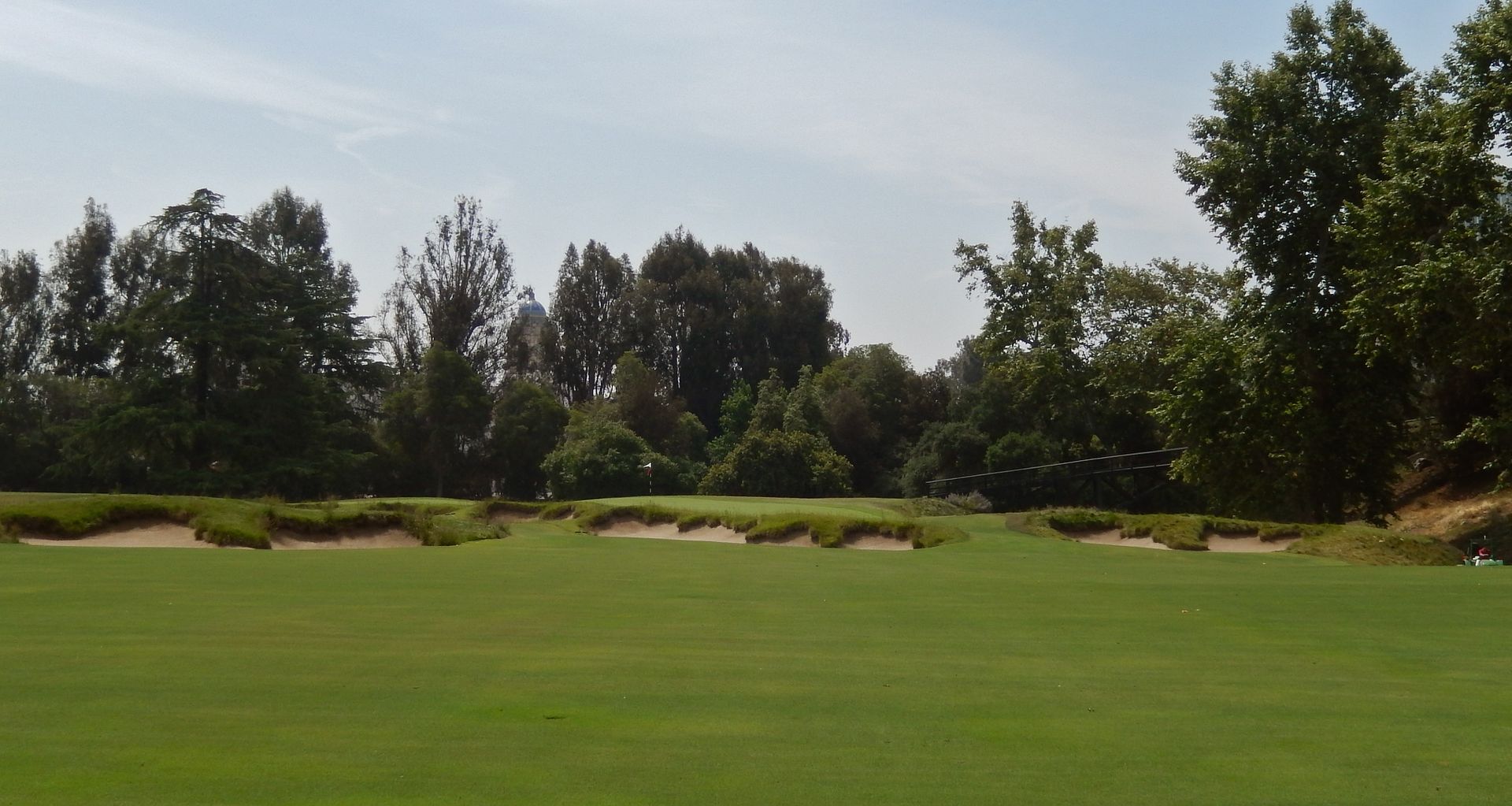
The restored 17B / Little 17:
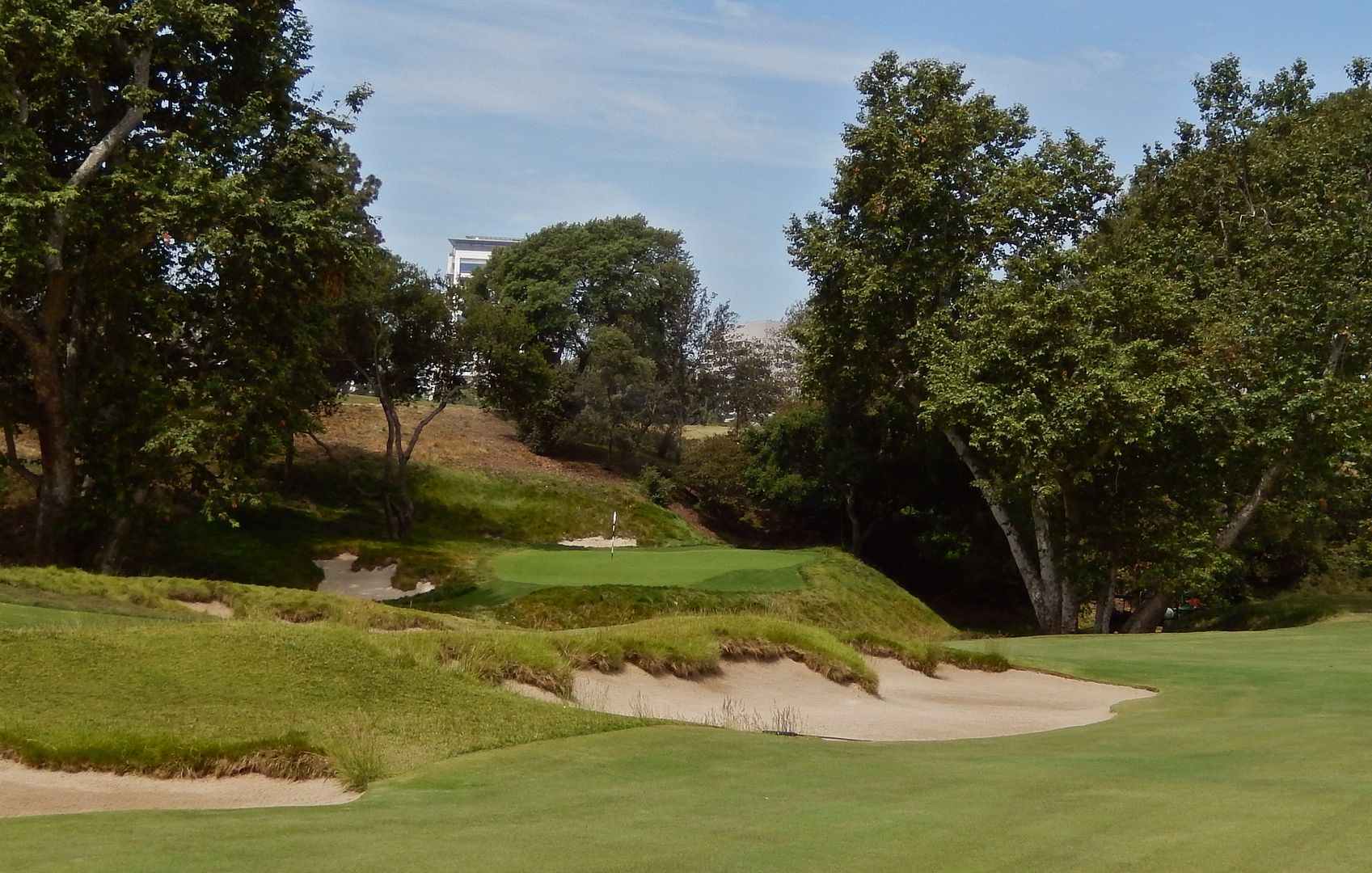
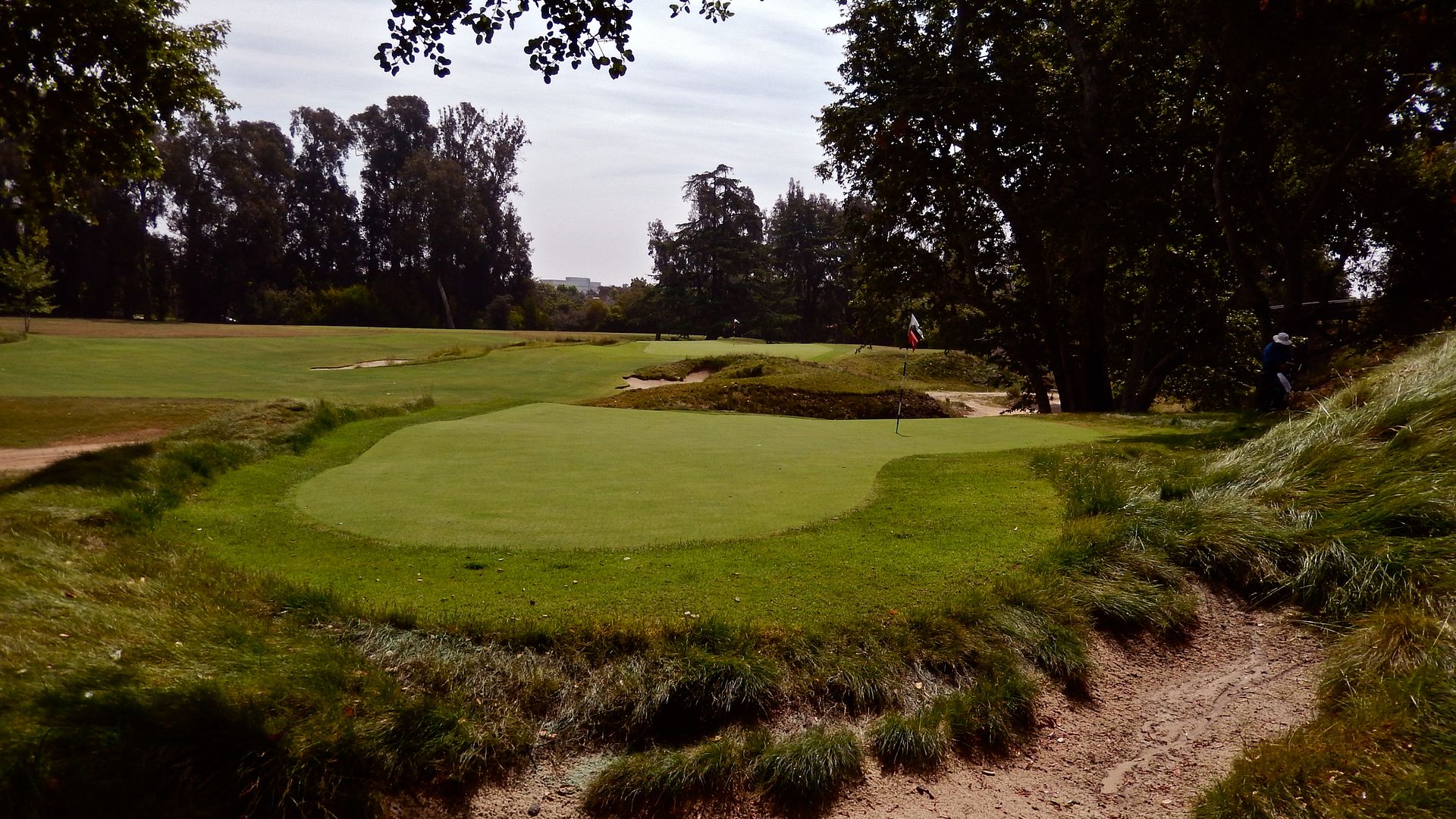
A final blind tee shot at the uphill, 500 yard par-4 18th. A true reverse-dogleg, the shortest line is over a bunker on the left, but the simplest angle of approach, from which it is easiest to avoid the greenside bunker that cuts halfway across the green's front, is from the right.
